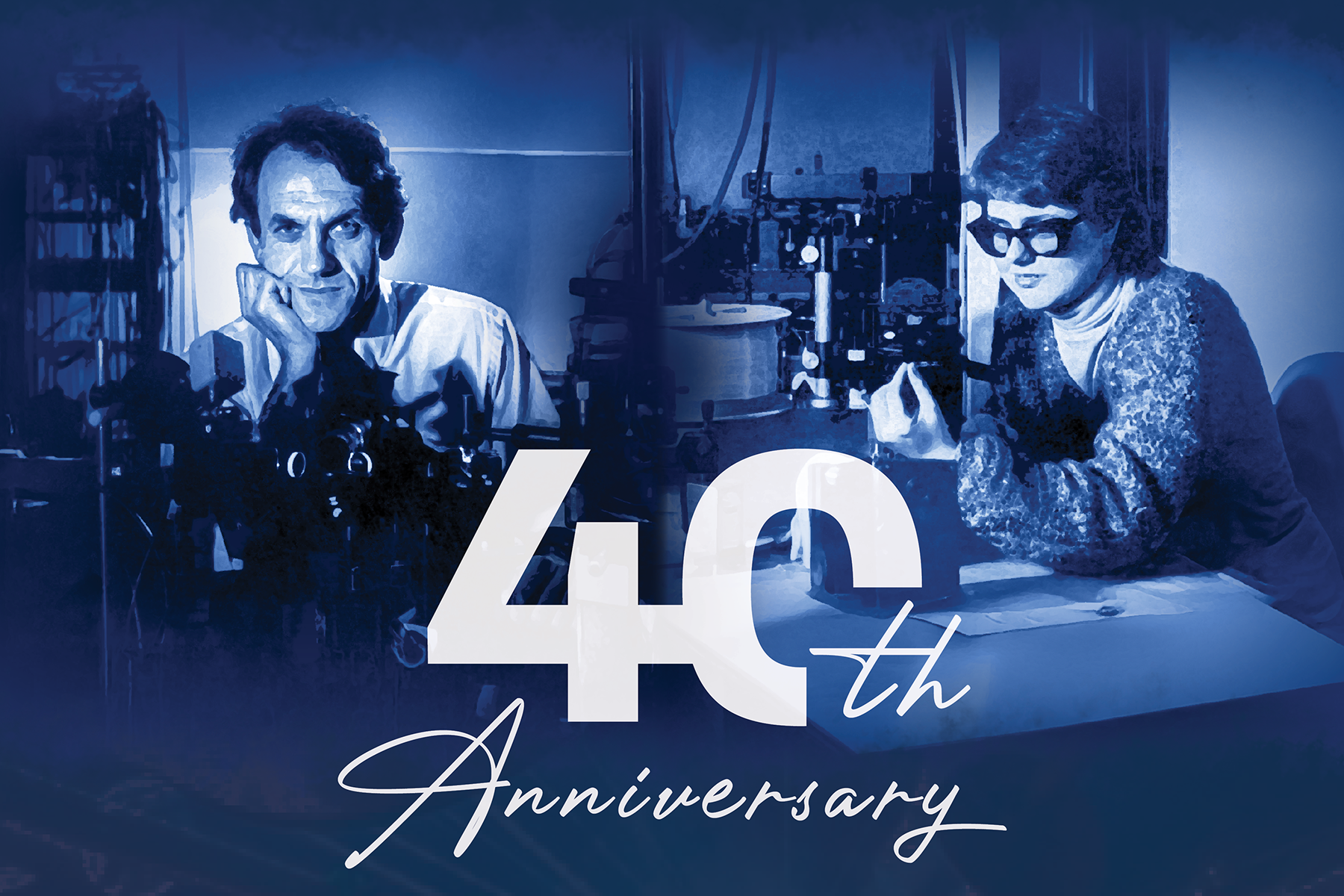From Student Research to Global Impact
This year marks the fortieth anniversary of chirped-pulse amplification (CPA), a groundbreaking laser technology first developed at LLE in the 1980s. Invented by then-graduate student Donna Strickland and physicist Gérard Mourou, both pictured above, CPA transformed the field of high-intensity laser physics and earned them the 2018 Nobel Prize in Physics.
The innovation began as part of Strickland’s doctoral research at the University of Rochester’s Institute of Optics, with Mourou serving as her advisor. They developed CPA by stretching a laser pulse before amplification, amplifying it, and then recompressing it. This process made it possible to achieve extremely powerful outputs without damaging the laser system.
Since its debut in 1985, CPA has revolutionized medicine, industry, and science, enabling delicate procedures like laser eye surgery, precision machining of strengthened glass for smartphones, and advances in particle acceleration and imaging. At LLE, CPA remains central to high-energy-density physics and fusion research, including experiments conducted on the OMEGA EP Laser System. Around the world, CPA underpins ultrahigh-power laser facilities, such as the National Ignition Facility’s Advanced Radiographic Capability and the Extreme Light Infrastructure in Europe.
From a student’s thesis project to a globally adopted technology, the story of CPA is one of collaboration, curiosity, and lasting impact. It is an innovation born at LLE that continues to shape the frontiers of science 40 years later.

